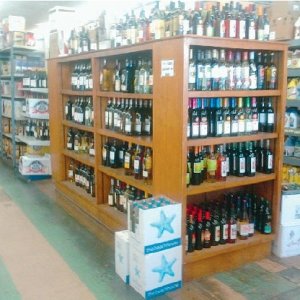Not according to a Rabobank International report released in January. In The Incredible Bulk – The Rise in Global Bulk Wine Trade, the figures show New Zealand is following in the footsteps of all other new world producers. For example Australia used to export 10% of its wine in bulk back in the 1990s. By 2011, that had increased to just shy of 50% (i.e. 49%). In just one decade, the increase in bulk wine exports from new world producers has increased from approximately one fifth to nearly one-half of all wine traded.
Here at home there has been much hand wringing over the bulk export issue. Are we shooting ourselves in the foot by supplying bulk wine to overseas companies for their own label, which will directly compete with our more expensive bottled wines? Are we selling too cheap? Are we devaluing our brand?
To answer those questions, there is a need to understand just why the bulk export market has grown so exponentially. And surprisingly the Rabobank report points out not all the reasons have to do with off-loading surplus wine.
“The advent of bulk wine transportation logistics has provided wine suppliers with a safe and reliable alternative to shipping masses of glass across the world,” the report states. “While this innovation has definite environmental benefits, it must be said that the over riding driver of bulk wine transportation is cost reduction.”
Brand owners are able to save on transportation costs, import duties, glass and bottling costs, working capital and even foreign exchange exposure due to the cost of packaging being paid in the destination – market currency. Added together, these cost savings can be significant to a producer, depending of course on the scale of the company.
“For suppliers interviewed, estimates of cost savings have ranged from USD 1.50 to USD 3.00 per case, which is highly compelling for high volume, low margin brands.”
These savings however are lower for the lower volume, higher margin labels, who also may believe bottling away from source, impacts on the value of their “estate grown” wines.
“That said, as options for in-market bottling expand and the process becomes more common place, there is a strong possibility this trend could extend to more premium brands as well. The dramatic growth of bulk wine in the export trade mix of the New Zealand wine industry is a case in point.”
The rise in bulk wine sales in the past decade, mirrors the growth in new world wine production. As consumer demand has grown it has led to “democratisation of wine.”
“New world wine companies in particular have brought keenly priced, increasingly well-made and well-marketed wine products into the reach of more consumers around the world,” the report states.
All of a sudden, consumers have been able to purchase quality at reasonable prices – and that has impacted on the prices they are prepared to pay.
“That is, demand has become slightly more price sensitive, making it more costly for retailers and wine companies to take pricing higher.”
Fuelling that price conscious consumer is the economic climate in many major markets.
“In an environment of extreme economic uncertainty, it is unsurprising that households have upped their savings and become increasingly value conscious, obligating suppliers and retailers to chase them down-market. Given that demand for wine has been found to be highly income elastic, or responsive to changes in income levels, the category is particularly exposed to the prevailing economic climate.”
This has seen the supermarket chains in the UK especially, using wine more and more as a loss leader, to attract people through the door. It has directly led them to producing their own labels that now proliferate supermarket shelves. But it has also led to many producers of more premium brands searching for ways to cut production costs, so as to be able to compete in such a tough economic climate.
So given this exponential rise in bulk wine sales in the past decade, what does the future hold?
For the past decade there has been dramatic vineyard expansion, not just in New Zealand, but in all new world countries. That has led to growth in new world production of almost 45% over the past 20 years. That could be about to change according to the Rabobank report.
“In more recent times, a process of structural and seasonal supply rationalisation has played out across the world’s major wine production zones. Ironically, moving forward, the continued growth in the trade of bulk wine may be driven by the trend of tightening global stocks. The tightening of the global supply situation is leading to increasing grape and bulk wine prices in many key supply countries, raising the cost of goods sold for wine companies. With rising costs and difficulty raising prices in the current consumer environment, wine companies will be aggressively seeking ways to reduce costs, and bottling in-market may become an increasingly attractive option.”
Which may see even more of New Zealand wine being shipped in bulk – while still being marketed as a premium product.
This email address is being protected from spambots. You need JavaScript enabled to view it. ν










